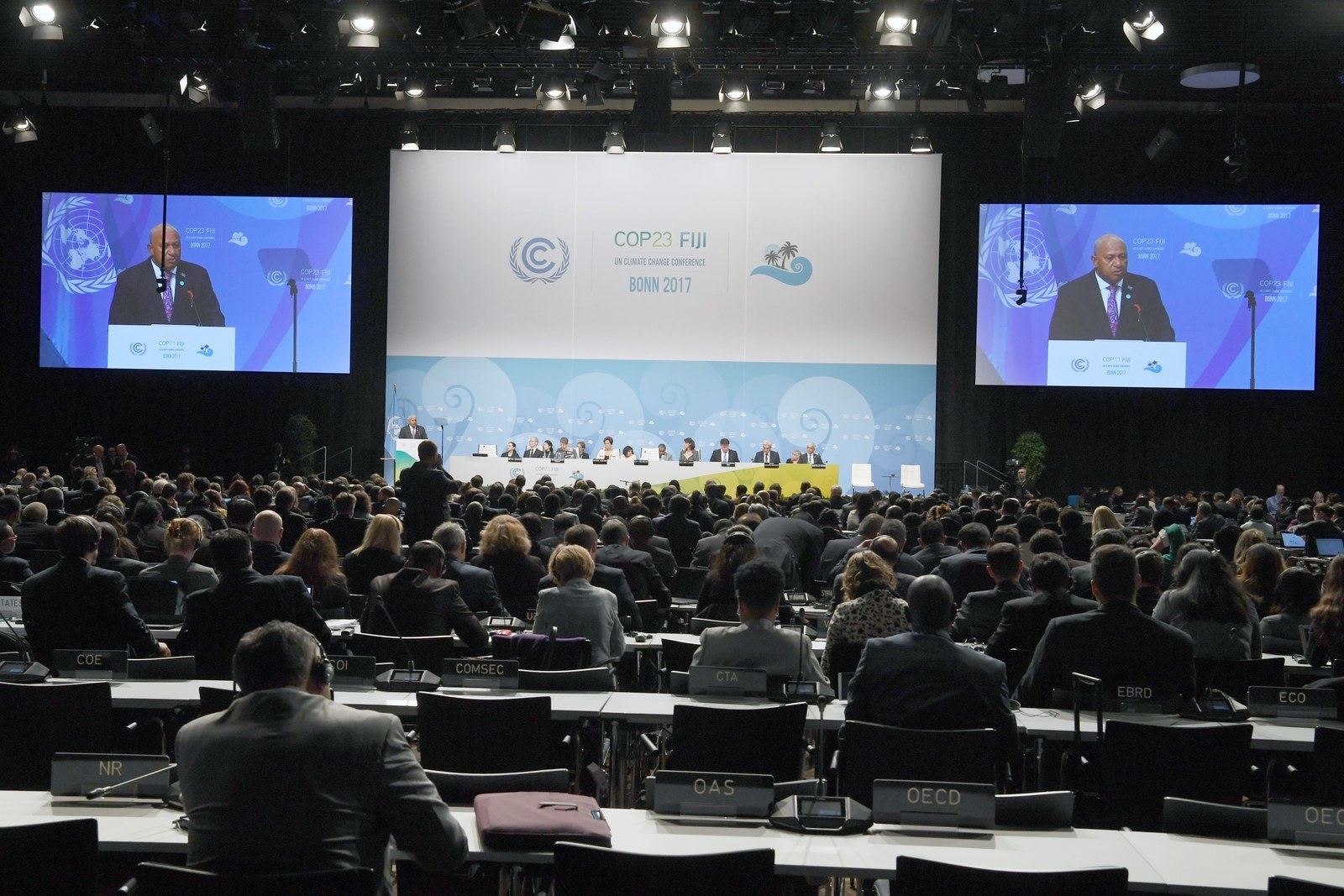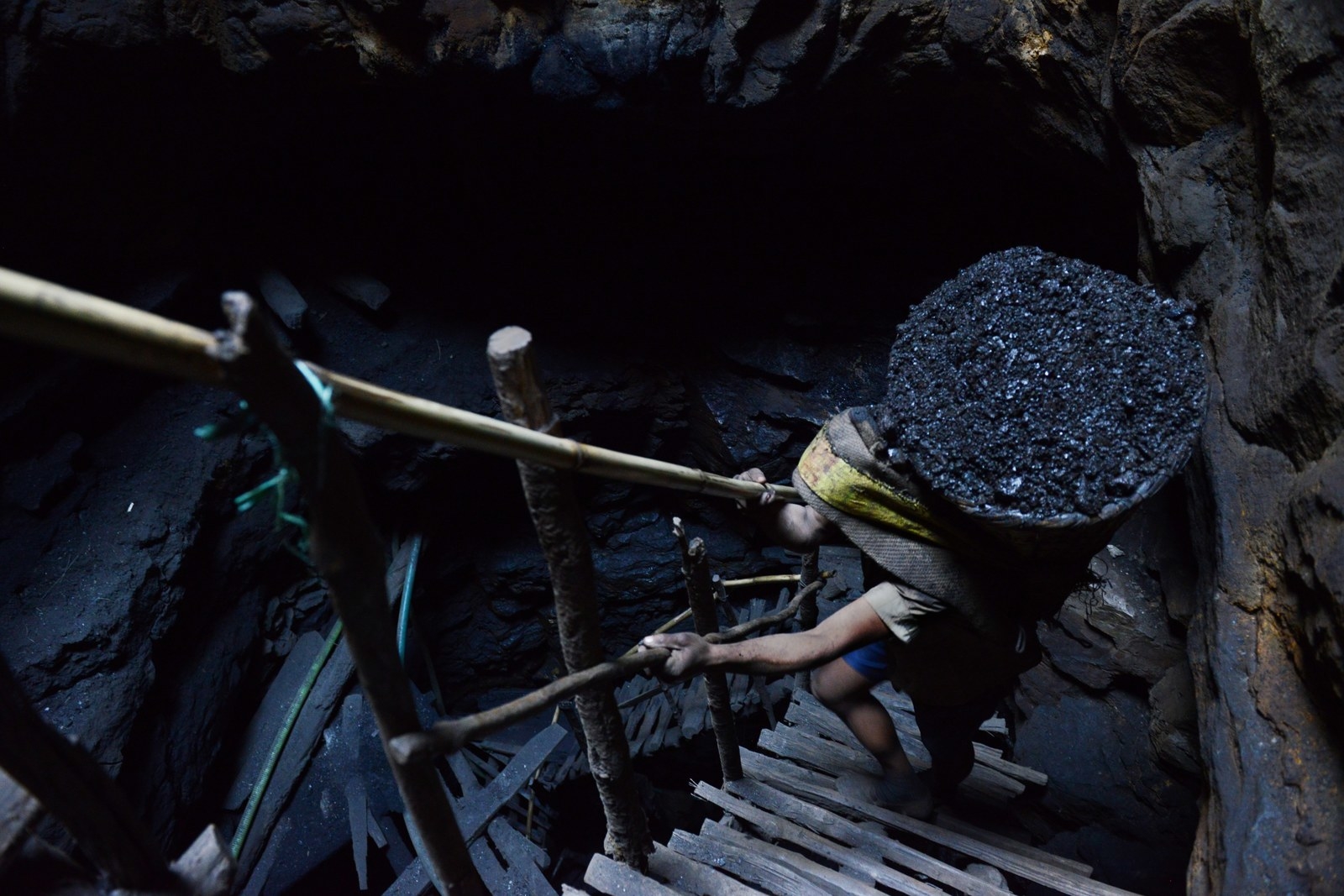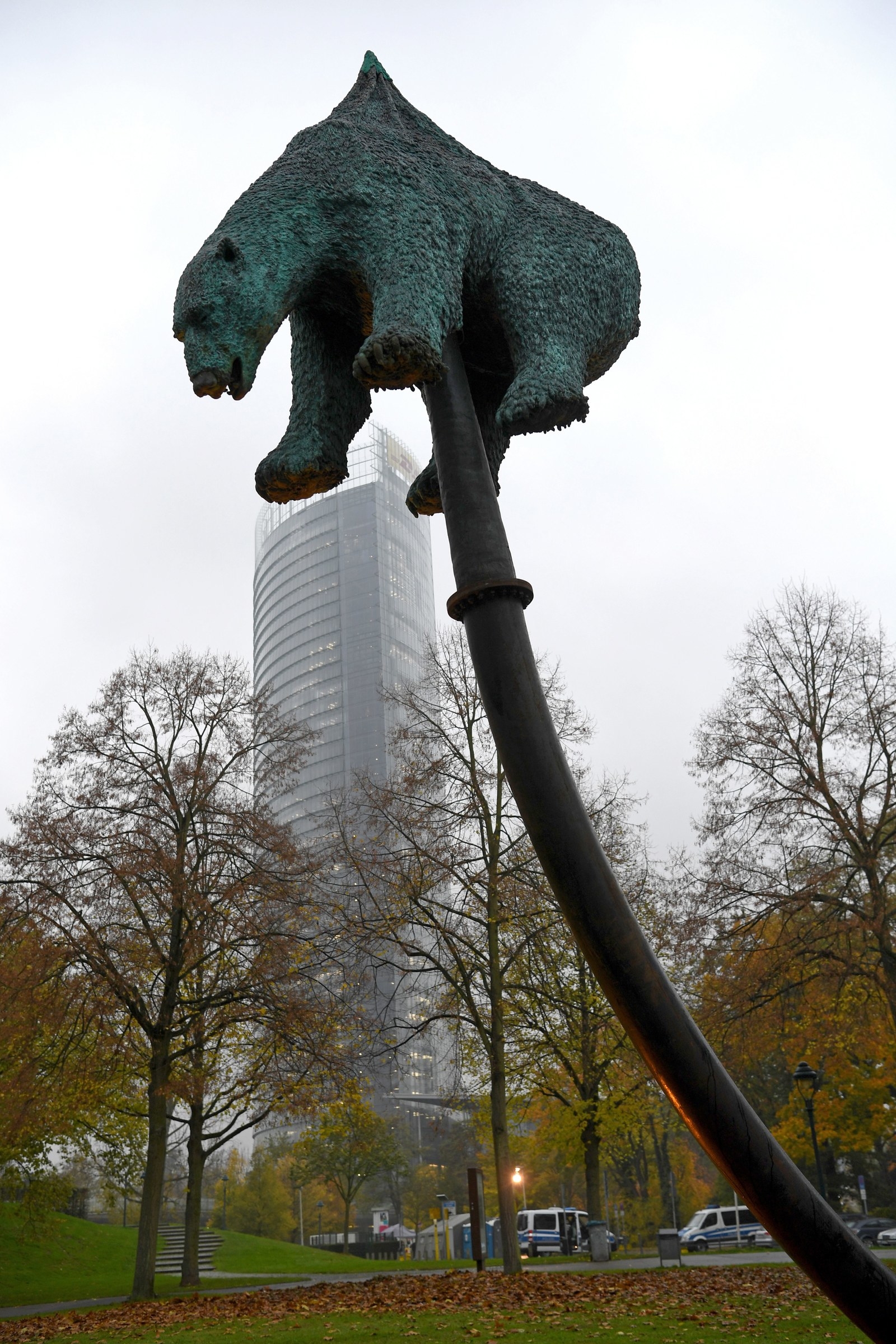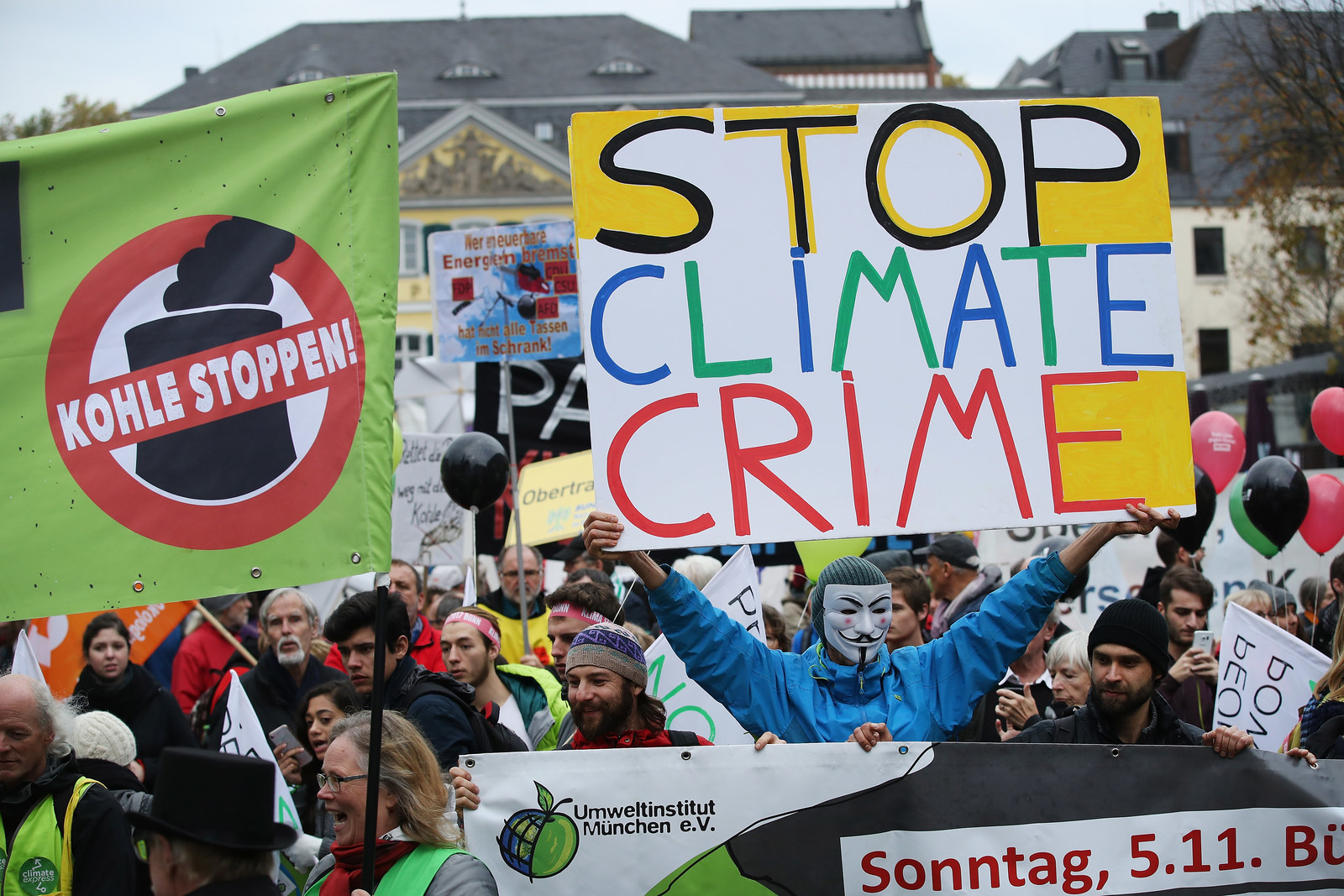
It’s 5am on a Sunday inside a large, oval conference room in the United Nations Campus in Bonn, Germany. Around me are a dozen twentysomethings – journalists, students, and activists from around the world – sprawled lifeless across the cheap seats in the balcony, heads balanced on backpacks.
Downstairs, in the "pink and blue badge only" sections, diplomats from developing countries and woke onlookers huddle to verify if vulnerable millions have been screwed out of climate finance from rich countries by a "typo".
For over 10 days, world leaders have been delivering their statements on the urgency to act as if their day jobs depended on it. With a bang of the gavel, Fijian prime minister Frank Bainimarama brings the show to an end. Support for the worst-hit flood and hurricane victims has been postponed by another year.
In case you're wondering, this is what the finish line of a UN Conference of Parties (COP) on climate change looks like. This year's edition is the 23rd in a series of annual international meetings convened to figure out how to deal with biggest crisis humanity has ever faced.
It’s not easy to get 169 countries – many of whom hate each other’s guts – to agree to cut back on the grease that keeps the wheels running.
Despite the jet fuel expended towards discussions to “save the planet”, the outcomes of international climate talks like these are rarely earth-shattering, leaving it up to individual governments to decide how they want to tackle climate change. “When people back home ask me what we do here, I tell them it’s mostly navigating bullet points, headings, and subheadings,” says a senior negotiator from Southeast Asia. “I don’t think they're very impressed.”

Given how long and how much diplomacy it takes to address the immediate, life-threatening impacts of climate change on the ground level, is there any point in following the COPs and keeping up with the entire political process?
“I think it’s extremely important because it helps you understand the world as it actually exists, how power is concentrated, in what hands, and how that concentration is protected and consolidated,” says Nathan Thanki, a 27-year-old activist from Belfast.
Thanki has been memefying and keeping tabs on the power plays for seven years now, and he's only too aware of how slow and ridiculous the process can be, and that it's not quite the place for solutions.
“Where science and political reality meet is always going to be a space of extreme dejection,” he says. “But anybody who says to you that the world is gone to hell in a handcart, they might be right; until it happens, they’re not. I think there’s a lot to be said about environmental talk, and this obsession with end-of-the-world thinking, while forgetting that for a lot of people the world has already ended, many times over.”
It’s 7am when I finally close my eyes and find myself thinking of my friend Babita Adiley, a 27-year-old Dalit schoolteacher from Chhattisgarh. “Whenever you’re low and think things can’t get any worse, remember me,” she said in our last phone call. In 2014, her house was razed, taking with it everything she ever owned – courtesy of the expansion of Gevra, one of Coal India’s largest mines.
As I try to fall asleep on my cold hostel bunk, my phone buzzes to life. I learn that the mine has just received a permit to expand even further, putting her at risk of being displaced again without the company even having to talk to her.
I think of Rathobai Rathia, who at age 17, fought and won a case allowing women to work in mines that swallow their lands and void their livelihoods, and wonder what a just energy transition would mean for her. I think of Deepak Sahu, the MBA graduate leading strikes stopping the coal dispatch because there is no other way youth in his community will be heard, and the company he’s helping form so solar panels can be installed on mine waste dumps.

In my backpack I carry their stories and struggles, but also the weight of knowing that the means that young, urban India chooses to power itself up with will not just have a major impact on the world, but also accentuate the impact we have historically had on our own people.
Adivasi and Dalit communities form a majority of those who’ve borne the burden of our energy choices while being robbed of any themselves. Between 1947 and 2000, nearly 24 million Adivasis in India – roughly equal to the present population of Australia – were turned into refugees of development, displaced by large projects.
But even if you continue to be wilfully caste-blind as long you can still fire up BookMyChotu, there’s no missing the smog that’s stealing from our futures – a Lancet health study estimates that in 2015 alone, air pollution was responsible for half a million premature deaths in India.
The smog blanket around our cities and the drought that brings farmers carrying skulls of their dead peers to our doors are signs that none of us are immune.
India is currently the world’s third-largest carbon emitter, coal producer, and consumer, and has “no plans to back down any time in the near future” because of our development imperatives and poverty alleviation goals.
It’s not easy to get 169 countries – many of which hate each other’s guts – to agree on an agenda that requires them to cut back on the grease that keeps the wheels running or to pay up for damages. Which is why an agreement struck in Paris in 2015 was historic and still remains to be so. Israel and Palestine signed it. War-torn Syria announced that it was signing up on the second day of this COP, leaving the United States out in the cold as the only country that wants out of the agreement by 2020.
I lie in the dark, thinking of villages in the shadow of power plant chimneys without an electricity connection to their name. It helps still my conscience that we’re nowhere close to being the biggest villains in the room, something we once again have the low-carbon footprint of our poor to thank for. No, the dubious honour of being the planet’s most toxic ex still belongs to the US, which is threatening to leave the Paris agreement but still has its foot in the door, stalling negotiations and support for the worst-hit communities in the developing world.
I certainly did not expect to have my faith in America restored at a Trump administration–led event that promoted coal and nuclear power as the answers to climate change. And yet that is exactly what happens.
Within minutes of the event starting, youth and indigenous activists walked out of the event, leaving it as empty as Donald Trump's hollow spiel on clean coal. Outside, there is inspired singing, a sharing of stories more honest and open than anything I’ve witnessed at the talks so far. And that is where I meet Jade Begay, on the sidelines.
Born Navajo and Tesuque Pueblo, Begay grew up in northern New Mexico and has witnessed the devastating effects of coal and uranium mining on her people first hand. A documentary filmmaker, she joined the Indigenous Environmental Network, after seeing how much media and storytelling was needed in indigenous movements.
“One of the things that made Standing Rock most powerful was the ability to livestream and for indigenous people to take charge of their own narratives,” says Begay. “The reason I got into filmmaking and digital storytelling is because I grew up yearning for stories of my people by my people, especially native women. For hundreds of years our story has either been told for us or there's been total erasure of our story.”
And while it’s easy for so many to become conference junkies, she makes it clear that it’s not what she’d rather be doing. “Ultimately, native people don’t want to be doing this work, burning jet fuel to have our voices heard when we want to be building sustainable communities on ground, but we have to show up at these sorts of meetings, or otherwise you’re just written off the map.”
For communities who’ve been historically tasked with protecting the world’s forests and resources, representation has still been a huge challenge. What was seen as one of the most positive outcomes from the 23rd COP is an Indigenous Peoples’ Platform that should finally bring more native voices to the forefront of the climate talks.
Begay, however, is cautious: “It’s just words at this point. We’re already seeing so many of our people becoming refugees across the world because of displacement by extractive industries. If countries wanted to reduce emissions, they would uphold indigenous rights, and if they did, people would be able to assert them.”
Instead, market-based solutions that turn forests into tradeable carbon offsets continue to be proffered as the solution: “If we’re the ones with the solutions, why are we seen as the radicals in the room?”

Even including a reference to accountability to future generations is a radical act, by the looks of it. René Kieselhorst, along with 40 other young people from over 30 countries, lobbied for almost two years to sneak the words “intergenerational equity” into the Paris agreement. “They almost left it out because of a copy-paste error!” he says. The principle points to the fact that inaction or nonaction now will have a serious bearing on generations to come.
“If you talk to a lot of diplomats, they see the urgency, but they are bound to that process and tend to forget what this is really about – entire cultures and histories vanishing,” he says. Kieselhorst has faith in the importance of the process, and that “justice can lie in the smallest of details”.
But he too believes that local actions will count, in the long run. “Most people don’t talk to their MPs. It’s their job to listen to you and do certain things. If only the big lobbyists are talking to them, who’s going tell them otherwise? If you ask them questions, they might ignore you the first few times, but the more times you do it and the more people you bring with you, they’ll be forced to listen.”
What should millennials in India be gearing up for? More heatwaves, more floods, and a crippling loss of life savings, if climate change is left unchecked.
So far, what’s been produced at this COP are notes for a rulebook for what countries must do after 2020. Which doesn't really mean much considering it took mass protests by developing countries to push rich, developed nations to acknowledge all the stuff they’re legally obligated to do before 2020.
All this left me wondering why I'd packed two weeks worth of formals for a process that yields so little. In the words of a diplomat from Nicaragua, one of the last countries to join the Paris agreement, because it was not ambitious enough, “the world is not waiting with bated breath for what comes out of Bonn”.
No, it’s clear that the world has other plans. The last three years have been the hottest on record. CO2 emissions, believed to have peaked, are rising again. Months before the climate talks, nature dispatched back-to-back Category 4 hurricanes to shell-shock even the most the privileged climate deniers. Floods killed 1200 people in South Asia alone, while even megacities like Mumbai were caught unprepared for the deluge. What we’re seeing now is the world at 1.1°C warmer – experts predict that this could go to 3.2 degrees higher in this century at the rate we’re going. And even if countries made nice noises about what they intend to start doing two years from now, it’s not even a third of what’s needed to keep warming under 1.5°C.
What should millennials in India be gearing up for? More heatwaves, more floods, and a crippling loss of life savings, if climate change is left unchecked.
“We are handing young people a planet where things are out of control. Scientists should be standing up and telling the negotiators that they should be doing something and they’re moving too slow,” said James Hansen, climate scientist, urging the scientific community to step out of its reticence and for countries to impose a carbon tax.
Over 50 civil society groups and individuals including writer Naomi Klein and journalist George Monbiot want big carbon polluters to pay a climate damages tax for the hell they wreak. “Despite their pledges at Paris, countries are going to keep burning cheap fossil fuels, without working in their costs to society – air pollution, water pollution, and climate change,” said Hansen. “If your child gets asthma, fossil fuels companies are not going to pay for your medical bills.”
I breathe out into the bitter German cold, think of the air back home in Delhi, and count the actual stars. Hope for now is a distant promise of central heating, and for a brief minute, I don't care what's burning to keep me warm at the break of dawn.
That’s not a luxury we have any more. For Lusia Feagaiga, an activist from the Pacific island of Samoa, Germany’s continued dependence on coal is deeply personal. “We especially wanted to welcome chancellor Angela Merkel, because we hear that Germany has not yet committed to a coal phase-out,” he says while rolling out a “Keep It in the Ground“ red carpet for the last leader of the free world.

Despite renewables rising to nearly 30% of its energy mix, Germany is still heavily reliant on coal – particularly brown lignite, which accounts for nearly 40% of its electricity. This is a reliance that experts say could persist as it phases out nuclear plants while renewable storage remains to be an issue. It is a reliance that could cost it politically, as the Greens draw a red line for Merkel.
Lusia wanted to remind the chancellor of a rapidly shifting line in the sand. “We wanted to tell her that back home in Samoa, there’s salt in our fields and not enough fresh water to drink. Our ancestral homes are moving inward as the tides come in.”
Hope, for me, was not to be found in the negotiating rooms of the Bonn at all – even if this year saw several incremental wins for the third world. Much as I wanted to cheer harder for desi diplomats fighting the good fight on behalf of developing countries, no yoga stretch at the Indian pavilion could conceal that there’s much to be done at home, whether or not the historical debt for the mess we’re in is ever settled. The smog blanket around our cities and the drought that brings farmers carrying skulls of their dead peers to our doors are signs that none of us are immune.
Instead, I found hope in the teenagers taking on Trump, typhoon victims taking on carbon majors, and Swiss grannies challenging the mightiness of negotiators. It was in the nerds of the nightwatch, who stayed on long after I’d left to see what sneaky policy decisions had made the cut at this year’s COP and who’d influenced them.
Hope was in the volunteers who plied me with fair-trade chocolate and whispers on happenings from inside the rooms. Hope continues to lie in people’s movements resisting everywhere, building solidarity, capacity, and resilience and taking responsibility locally, nationally, and globally. But most of all, it anchored itself in young people reclaiming power as we try to reimagine a future at the end of the tunnel.
“Fuck the apocalypse and especially certain voices that position themselves as objective and pronounce the situation irredeemable the first time they’ve been threatened,” says Thanki. “If you can’t imagine something besides the end of the world, I think you have a very stunted imagination.”

